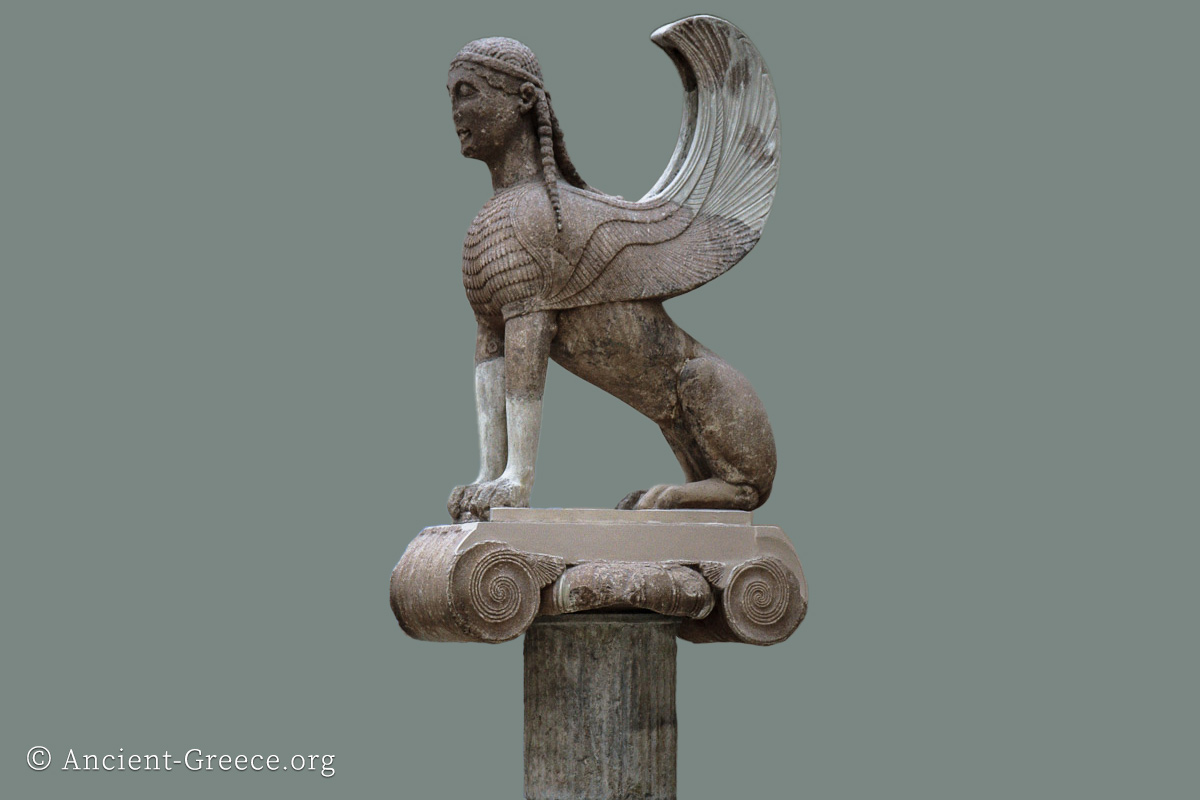
On this page:
Egyptian Deity
The Sphinx was an ancient Egyptian divinity, who personified wisdom, and the fertility of nature.
She is represented as a lion-couchant, with the head and bust of a woman, and wears a peculiar sort of hood, which completely envelops her head, and falls down on either side of the face. Transplanted into Greece, this sublime and mysterious Egyptian deity degenerates into an insignificant, and yet malignant power, and though she also deals in mysteries, they are, as we shall see, of a totally different character, and altogether inimical to human life.
Sphinx at Thebes
The Sphinx is represented, according to Greek genealogy, as the offspring of Typhon and Echidna. Hera, being upon one occasion displeased with the Thebans, sent them this awful monster, as a punishment for their offences. Taking her seat on a rocky eminence near the city of Thebes, commanding a pass which the Thebans were compelled to traverse in their usual way of business, she propounded to all comers a riddle, and if they failed to solve it, she tore them in pieces.
During the reign of King Creon, so many people had fallen a sacrifice to this monster, that he determined to use every effort to rid the country of so terrible a scourge. On consulting the oracle of Delphi, he was informed that the only way to destroy the Sphinx was to solve one of her riddles, when she would immediately precipitate herself from the rock on which she was seated. Creon, accordingly, made a public declaration to the effect, that whoever could give the true interpretation of a riddle propounded by the monster, should obtain the crown, and the hand of his sister Jocaste.
Oedipus
Oedipus offered himself as a candidate, and proceeding to the spot where she kept guard, received from her the following riddle for solution: “What creature goes in the morning on four legs, at noon on two, and in the evening on three?” Oedipus replied, that it must be man, who during his infancy creeps on all fours, in his prime walks erect on two legs, and when old age has enfeebled his powers, calls a staff to his assistance, and thus has, as it were, three legs. The Sphinx no sooner heard this reply, which was the correct solution of her riddle, than she flung herself over the precipice, and perished in the abyss below.
The Greek Sphinx may be recognized by having wings and by being of smaller dimensions than the Egyptian Sphinx.
From: Berens, E.M. The Myths and Legends of Ancient Greece and Rome. New York: Maynard, Merril, & Co., 1880. Text in the public domain.












